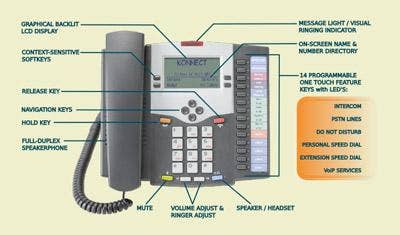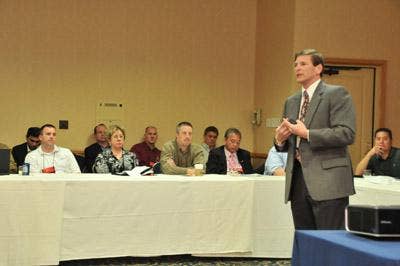The 10 Biggest Public Sector Channel Stories Of 2009

Stimulus. Defense. Cybersecurity. Czar. ARRA. GWAC. DOD. HITECH. Electronic medical records. The public sector IT channel is a bizarre and often-confusing collection of buzz words and acronyms already, and in 2009, it gained many more. It was the stories behind each of those buzzwords, however, that defined the public sector IT channel this year.
Here's a look back at the top 10 issues driving the public sector IT channel this year. If you're a government, education or healthcare VAR or a global integrator, you had a year that was alternately tough and exciting. And if you looked hard and deep enough, you saw opportunities for business growth in your public sector practice like never before.
What's that old Grateful Dead line? "Once in a while you get shown the light in the strangest of places if you look at it right." Indeed.

Administrations come and go and many procurement vehicles are designed to last regardless of who's in office. That said, the advent of the Obama Administration has many integrators believing that the era of a new, tech-savvy government has also been ushered in, regardless of politics. President Barack Obama named highly lauded state figures like Vivek Kundra, the new federal CIO, and Aneesh Chopra, the new federal CTO, to crucial posts. Their goal? To make government open and transparent and to use technology to improve the way government does business.
The next two years will determine whether Kundra, Chopra and other key technologists in high places can turn good ideas and bold rhetoric into actionable change -- and opportunity for government solution providers, who have heard often in 2009 the message that public and private sector technology interests must work in tandem to maximize each's effect.
At the very least, all entities involved in the procurement process at any public sector level should expect to see increasingly stepped-up scrutiny of contracts and ROI. With the economy still in shambles, that's not going away any time soon.

At the beginning of the year, it was a foam-at-the-mouth opportunity for many solution providers and integrators: the $787.2 billion American Recovery and Reinvestment Act promised to be a boon to IT, and opportunities for savvy solution providers would abound, especially in health care, state and local government, broadband infrastructure and the energy sector. Powerhouse public sector vendors like IBM, HP and Cisco marshaled their resources to help VARs tailor stimulus strategies, and many distributors fashioned new VAR outreach programs tailored to capturing stimulus dollars.
It was apparent to the channel when the dust settled around stimulus that there would be some opportunities, but those opportunities probably wouldn't be as robust as once thought. Gartner's Rishi Sood, for example, told attendees at IT ChannelVision Government that "expectations were larger." ("A pot of gold? Not in your wildest dreams," he said.)
Still, a number of VARs continue to tell Channelweb.com about projects and subcontracts and various other opportunities they've been able to embrace as a result of stimulus. If ARRA isn't a rising tide carrying all boats, it's still a wave.

President Obama named cybersecurity as a major priority of his administration, and as early as February 2009, he announced that the appointment of a cybersecurity czar -- someone to head all cybersecurity efforts in government -- was imminent. We were still waiting on said czar in December 2009, and although the drum beat has continued to grow louder for a broader, more effective cybersecurity policy from the administration, putting someone in charge of those efforts has proven far more difficult.
Melissa Hathaway (pictured), the acting czar leader of the president's 60-day cybersecurity review team, was once considered the frontrunner for the job, and clocked many a frequent flier mile spreading the gospel to security experts. But Hathaway resigned in August for personal reasons, and momentum appears to have slowed, although some Washington insiders still suggest progress is being made.
With every breach and security incident -- including this month's Transportation Security Administration screening manual snafu -- a reminder of threats large and small, most observers agree it's time to get tough about security policy.

When the Fiscal 2011 OMB budget guidance came out in July, it included a specific callout for cloud computing -- one of the first times the cloud has been officially referenced, at least in budget terms, as part of the government's technology spend.
There's a reason for that. Cloud-based services and solutions are finally reaching critical mass in the public sector, and solution providers looking to explore and make money with cloud in public sector accounts are finally getting their phone calls returned, even if concerns over security and infrastructure still dog a faster cloud adoption.
"It's not there yet, but it's certainly a concept that's becoming more real in government," said Jack Cayouette, president of Fedstore, a Rockville, Md.-based solution provider, in a September interview as the federal buying season got underway. "We are seeing an overall trend toward the adoption of the cloud model -- a lot of piloting of cloud solutions, especially -- and a confidence level in the federal government that sees cloud solutions as making business sense."
Gartner, Input and other public sector IT researchers have differing views on cloud adoption in public sector, but most agree that 2010 will be the year of pilot programs, and 2011 the year when actionable, profitable solutions come to the fore. Cloud-savvy VARs should prepare now.

At Everything Channel's 2008 Healthcare IT Summit, former national coordinator for health IT Robert Kolodner suggested that 2008 would be remembered as a "tipping point year" for health care IT. Boy, was he right. The conversation began to shift that year, and this year, health IT went mainstream, with electronic medical records (EMR) blasting into the national lexicon and the technology needed to support them suddenly front of mind for healthcare-oriented solution providers.
EMR represents perhaps the most obvious of the hottest healthcare plays for VARs. International Data Corp. tracks EMR growth as being 15 percent a year, which means a big opportunity for not only those VARs that sell EMR systems, but also those who offer storage, software, app development, networking, security, systems, peripherals and other technologies needed as part of overall, interoperable EMR deployments. The practiced VARs in this space advise newcomers -- especially those chasing EMR-related stimulus bucks -- to look everywhere, up and down the system.
"I'd characterize a Cerner, McKesson, Siemens or one of those as the mothership systems of a given situation," said David Ward, vice president of Business Development for Carefx, an IBM ISV, said in an interview earlier this year. "But there are numerous other places outside those systems where data needs to go. What we see the stimulus bill providing is incentive to move between those disparate systems to improve clinical workflow."

Procurement vehicles change, evolve and ebb and flow anyway, so the notion that a shift in procurement is affecting the channel is not so much a big public sector story for 2009 as a perennial worry for integrators. The General Services Administration (GSA) schedule is still the conduit for plenty of government technology procurement, but plenty of solution providers look to Government Wide Acquisition Contracts (GWACs) and indefinite delivery/indefinite quantity (IDIQ) arrangements as a main source of business.
That said, there's a dramatic shift taking place in government contracts, and that's a move from a cost-plus model to a firm-fixed price one, which, according to Gartner, will account for 30 percent of federal government contracts in just a few short years.
Firm-fixed price (FFP) contracts occur when the public sector entity pays the contractor a fixed amount that won't vary, and the burden of accountability is shifted more to the contractor to deliver on what's promised, thus shifting more accountability to the integrator. A scary prospect for VARs and integrators? Sure. But also a much better chance to hit up the government for value-added services.
"That's a huge opportunity to influence government offices," said Jim Fraser, account director at HP Enterprise Services (formerly EDS), at Everything Channel's recent IT ChannelVision Government conference. "You can take the lead on designing those solutions."

As the new fiscal year for most state and local governments got underway in July, the numbers were a sad and sorry story. All but five states -- Montana, Nebraska, North Dakota, Texas and West Virginia -- entered their FY2010 with budget deficits. Twelve of those remaining 45 had budget gaps worse than 10 percent and 11 worse than 15 percent. To say state and local governments are feeling a little budgetary squeeze is to grossly understate the financial turmoil in SLED.
But that also meant that it was time to shine for efficiency-minded VARs and integrators. With budgets so slammed, state and local government CIOs ran out of places to cut, and are now forced to invest in technology that will make processes more efficient and replace laid-off workers.
The stimulus is helping in some respects -- about 60 percent of the stimulus technology spend goes to state and local interests -- but it's non-stimulus opportunities like regulatory form, recurring revenue streams and K-12 school consolidations that are of prime interest to VARs. Especially those VARs that have made efficiency solutions -- such as virtualization -- part of their public sector practice. If it's taken a downturn for many state and local CIOs to drink the Kool-Aid on virtualization, network optimization and data center consolidation, well, so be it.

Mergers and acquisitions are nothing new in the channel, or in the broader public sector IT community. But it would be impossible to ignore the fact that large vendors are snapping up global integrators -- integrators that specialize in BPO and have mammoth public sector interests, to boot -- left and right. HP grabbed Electronic Data Systems, now known as HP Enterprise Services, in 2008, and the move was seen as a counter to IBM, which with its monster IBM Global Services arm, practically wrote the book on being a vendor-integrator services powerhouse for public sector.
This year came bold salvos from two other top-tier vendors with services aims. First was Dell, which in a long-rumored move pulled the trigger on an acquisition of Perot Systems in September. (Perot, despite being in the process of acquisition, has continued to gobble up companies itself, collecting Bearing Point China Consulting in October.)
Second was Xerox, which shocked the channel at the end of September by saying it would acquire Affiliated Computer Services (ACS). ACS has a sizable public sector BPO practice, having recently returned to the federal space after selling its original federal practice to Lockheed Martin five years ago and having to wait out a noncompete agreement.

If the economy is going to recover, small businesses will need to recover, and plenty of observers are concerned that the U.S. government has done little improve small business interests this year while spending much time bailing out troubled big businesses. Sure, there are stimulus incentives for small businesses, but a number of reports from researchers like Input and watchdogs like the American Small Business League (ASBL) continue to insist that small businesses get the short end of the stick -- on everything.
There are glimmers of hope, however. Small VARs are seeing more opportunity to partner with integrators than ever before, thanks to a shift in contracts and an increased emphasis on federal incentives for 8(a), service-disabled, women-owned and other types of businesses. Those who have had success advise their peers to specialize -- and target only those contracts that fall into your specialty.
"We focus on the one or two GWACs we think are going to bring us success," said Linwood Jolly, president and CEO of Comm-Group, at Everything Channel's recent IT ChannelVision Government conference. "In the beginning, 11 years ago, we used to spend a lot of time at the small business office. They have good information, but they don't own the opportunities. They can't give you partnerships with large integrators and can't give you everything you could find."

With open source-based solutions getting greater attention than ever before, it was only a matter of time before the public sector and open source got properly acquainted. VARs have continued to tell Channelweb.com all year that thanks to the new, tech-savvy administration and broader mainstream acceptance of open source technologies, public sector CIOs and procurement officers are giving open source vendors and VARs a chance that barely existed even a few years ago.
Distributor programs around open source, like those from Synnex and Tech Data, consistently identify public sector as a strong opportunity for open source VARs. And open source powerhouses like Red Hat, which earlier this year launched a new channel program around open source ISVs, have robust government practices. At least two solution providers who attended GOSCON, the four-year-old public sector open source technology conference which this year was Nov. 5 in Washington D.C., said in interviews with Channelweb.com that the mood has forever changed on open source in government.
Don't believe it? Here's one-example. In a much-discussed memo dated Oct. 16, David Wennergren, deputy CIO at the Department of Defense, clarifies how the DoD will draft policy around the use and development of open source software going forward. Wennergren writes:
"To effectively achieve its missions, the Department of Defense must develop and update its software-based capabilities faster than ever, to anticipate new threats and respond to continuously changing requirements. The use of Open Source Software can provide advantages in this regard."